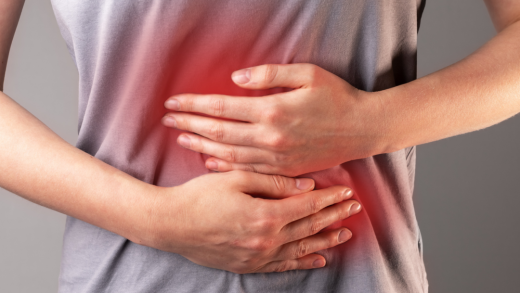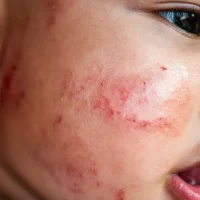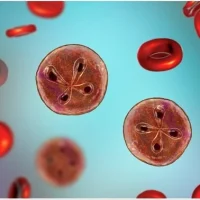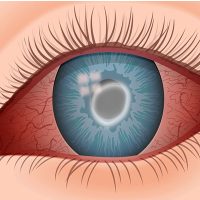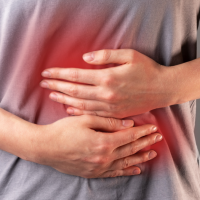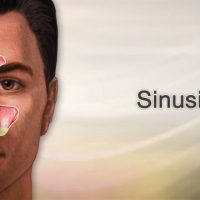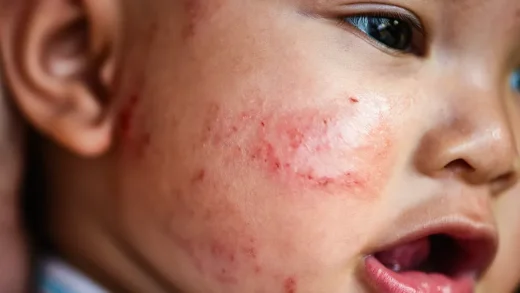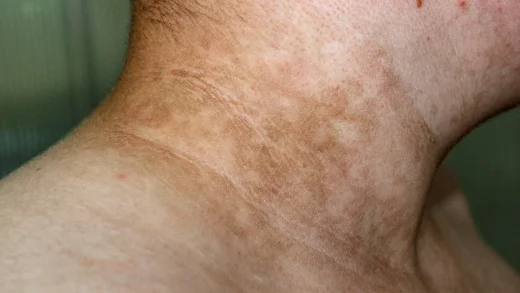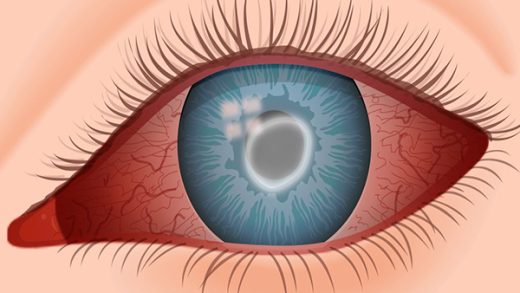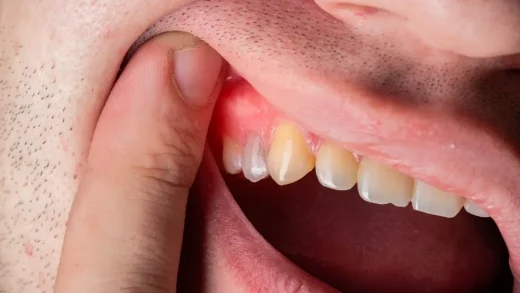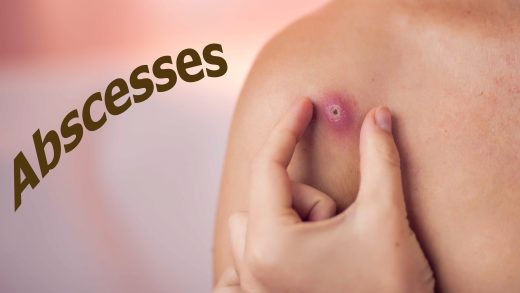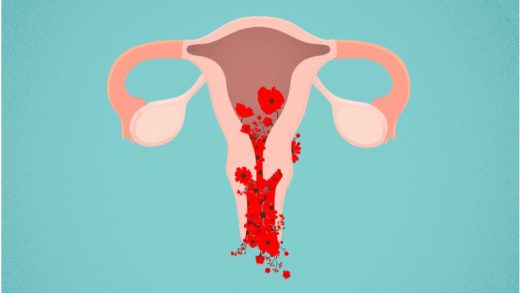What is an abscess?
An abscess is a pocket of pus. Abscesses can form almost anywhere in or on your body. When you get an infection, your body’s immune system kicks into action to try to fight it. White blood cells travel to the infected area and build up within the damaged tissue. This buildup leads to inflammation, which causes a pocket to form. The pocket fills with pus, creating an abscess. Pus is made up of living and dead white blood cells, germs, fluid and dead tissue.
What are the different types of abscesses?
There are many different kinds of abscesses. Abscesses can develop on your skin, in your mouth or around an internal organ.
Skin abscesses
Skin abscesses (cutaneous abscesses) develop under your skin. They’re common and typically easy to treat. Types of skin abscesses include:
- Armpit abscess: An armpit abscess can occur when pus collects in your armpit. One common cause of armpit abscesses is a condition called hidradenitis suppurativa. Hidradenitis suppurativa causes red, tender bumps in the skin of your armpits that can turn into abscesses over time.
- Breast abscess: A breast abscess is a pocket of pus in your breast. Untreated breast infections can lead to breast abscesses. Breast abscesses often occur in people who are breastfeeding (chestfeeding).
- Anorectal abscess: An anorectal abscess is an abscess located under the skin around your anus or rectum. A perianal abscess is a type of anorectal abscess that affects the skin around your anus. A pilonidal abscess is an abscess in the skin of the crease of your buttocks.
Abscesses in your mouth
Abscesses in your mouth can affect your teeth, gums and throat. A tooth abscess (dental abscess) is an abscess that forms around a tooth. There are various types of tooth abscesses:
- Gingival abscess: Another name for a gingival abscess is a gum abscess. This type of abscess develops in your gums. It doesn’t usually affect your teeth.
- Periapical abscess: A periapical abscess is an infection that forms at the tip of the root of your tooth. This type of abscess can occur due to dental injuries or cavities.
- Periodontal abscess: A periodontal abscess affects the bones and tissues that support your teeth. It usually occurs due to periodontitis or gum disease.
Other abscesses in your mouth may include:
- Tonsil abscess: A tonsillar abscess is a pocket of pus behind one of your tonsils. Tonsillar abscesses are most common in adolescents and young adults.
- Peritonsillar abscess: Another name for a peritonsillar abscess is a quinsy. A quinsy is a buildup of pus between your tonsils and the wall of your throat.
- Retropharyngeal abscess: A retropharyngeal abscess is an abscess in the back of your throat. This type of abscess forms when lymph nodes in the back of your throat become infected.
Internal abscesses
Internal abscesses occur much less frequently than external ones, but can develop on your spinal cord, brain and other organs. Internal abscesses are usually harder to diagnose and treat.
- Abdominal abscess: An abdominal abscess is a buildup of pus inside your belly (abdomen). It may be located inside or near your liver, kidneys, pancreas or other organs.
- Spinal cord abscess: A spinal cord abscess is a buildup of pus in and around your spinal cord. An infection on your spine usually causes a spinal cord abscess.
- Brain abscess: A brain abscess is a rare buildup of pus in your brain. An abscess may form in your brain when bacteria from an infection elsewhere in your head or bloodstream or from a wound enter your brain.
Symptoms and Causes
What does an abscess look like?
It is simple to see an abscess beneath your skin. It might seem swollen, elevated, and red. It is possible that the skin over the abscess’s center is thin. Pus may be visible beneath the skin’s surface, giving the appearance of yellow or white. To the touch, the abscess might feel warm and tender. A skin abscess can also cause pain, fever, and chills.
A severe toothache could be the result of an abscess in your mouth. Gum edema is the appearance of a gum abscess. Occasionally, swelling may also occur in your cheeks, jaw, or floor of the mouth. Additional signs of oral abscesses consist of:
- Teeth sensitivity.
- Fever.
- Difficulty swallowing.
- Difficulty opening your mouth.
For deeper skin abscesses or those inside your body, symptoms aren’t as obvious. Some symptoms relate to the part of your body that’s affected. You may experience:
- Fatigue.
- Pain and tenderness.
- Fever.
- Chills.
- Excessive sweating.
- Loss of appetite.
- Weight loss.
How does an abscess form?
Abscesses are typically caused by bacterial infections. Most abscesses are caused by a bacteria known as Staphylococcus. Your immune system deploys white blood cells to combat infections caused by bacteria. Inflammation results from this process, and the surrounding tissue perishes. An abscess develops when this occurs when a pocket forms and fills with pus.
Rarely, viruses, parasites and fungi can cause abscesses.
Diagnosis and Tests
How is an abscess diagnosed?
A physical examination by your healthcare provider can determine the diagnosis of a skin abscess. After examining the abscess, they will inquire about your symptoms. For testing purposes, they might take a sample of pus from your abscess. Your healthcare provider can determine the type of bacteria causing the abscess by analyzing the sample. This can assist them in selecting the most appropriate course of action.
Deeper abscesses, including internal abscesses, are harder to diagnose since you can’t see them. Your healthcare provider may need to order imaging tests. These tests may include:
- Ultrasound: An ultrasound is a safe medical imaging test that uses sound waves to create a real-time video of your internal organs.
- CT (computed tomography) scan: A CT scan uses X-rays and computers to create images of a cross-section of your body.
- Magnetic resonance imaging (MRI) scan: An MRI uses a large magnet, radio waves and a computer to create clear images of your organs and body structures.
Management and Treatment
How is an abscess treated?
An abscess near the surface of your skin or one that is very tiny may go away on its own. Using a warm compress on the abscess site could help it disappear. An abscess may naturally drain, but you should not try to drain or burst it at home. Squeezing the pus out of an abscess on your own can easily transfer the bacteria to other parts of your body.
An antibiotic may be prescribed by your healthcare professional. However, surgical drainage may also be necessary as part of abscess treatment. Initially, a local anesthetic will be applied to the abscess area by your healthcare provider. The area will be numb but you will remain awake thanks to local anesthesia.
An incision of very small size will be made in the abscess by your healthcare provider. They will let the abscess drain so that any leftover pus, dead tissue, and debris can be removed. To let any leftover pus escape, they will leave the abscess open. (In cases of larger abscesses, gauze may be used to pack the open abscess.) They will then cover the area with a fresh, dry bandage. The cut will mend by itself. There might be a scar where the incision was made. An abscess that has healed can be indicated by a scar.
A surgical drainage procedure will be performed by your dentist to remove an abscess on your gums. They might need to extract any affected teeth or perform a root canal, depending on how severe the abscess is. Additionally, they might recommend antibiotics.
Your healthcare provider may aspirate with a needle in cases of internal abscesses. You will be given either local or general anesthesia, depending on where the abscess is located. Then, they will use an ultrasound or CT scan to precisely guide a needle. They will use the needle to drain the abscess. A tiny skin incision may be made, and a drainage catheter—a thin plastic tube—may be inserted. Through the catheter, the abscess can empty into a bag. The bag might need to be left where it is for a week or longer.
Prevention
How can I prevent an abscess?
You can prevent skin abscesses by keeping your skin clean and dry. Bacteria getting into minor wounds cause most skin abscesses. Other steps you can take to prevent skin abscesses include:
- Washing your hands frequently.
- Not sharing towels, razors or toothbrushes.
- Avoiding nicking your skin while shaving.
- Maintaining a healthy diet.
- Quitting smoking.
- Practicing good dental hygiene.
Preventing internal abscesses can be more difficult. They are typically complications of other conditions.
Outlook / Prognosis
What is the outlook for an abscess?
Small skin lesions might go away on their own. However, if the abscess does not go away in a few weeks, you should consult your doctor. The abscess will have the chance to adequately drain and clear up with treatment. An abscess on your skin may grow and fill with pus until it bursts if it is not removed. In addition to being extremely painful, a burst abscess can spread the infection.
It is crucial to get treatment for oral abscesses, including toothaches. Tooth abscesses can be fatal if left untreated. If left untreated, infections can spread to your body’s surrounding tissues. Serious side effects like necrotizing fasciitis and sepsis may result from this, and they may even be fatal.
The location and course of treatment determine the prognosis for internal abscesses.
Living With
How do I take care of myself after treatment for an abscess?
If you had a skin abscess surgically drained, you should check your wound every day. As directed by your healthcare provider, you might need to repack the wound. You will need to adjust your dressing as necessary. In a few days, any access drainage should cease. The wound’s pain will eventually subside. In two weeks, the abscess should completely heal.
When should I see my healthcare provider?
Your healthcare provider may schedule a follow-up appointment to examine or repack your abscess. Make sure to keep all appointments. If you have any of the following symptoms, see your healthcare provider right away:
- Fever.
- Redness.
- Swelling.
- Increased pain.
Additional Common Questions
What’s the difference between an abscess and a boil?
An abscess that develops at the location of a sweat gland or hair follicle and damages the surrounding tissue is called a boil (furuncle). Compared to typical skin abscesses, boils are smaller and occur closer to the skin’s surface. Your face, neck, chest, and buttocks are frequently the locations of boils. The nose, ears, and fingers are among the sensitive parts of the body that hurt the most from boils.
A note from DocAdvice
Pus-filled pockets known as abscesses can appear anywhere on the body. Skin abscesses occur frequently. Warm compresses may be used at home to treat a skin abscess. However, oral and internal abscesses should not be handled carelessly. See your doctor if you experience any abscess-related symptoms that have not gone away on their own. They are able to evaluate your abscess and choose the best course of action.



